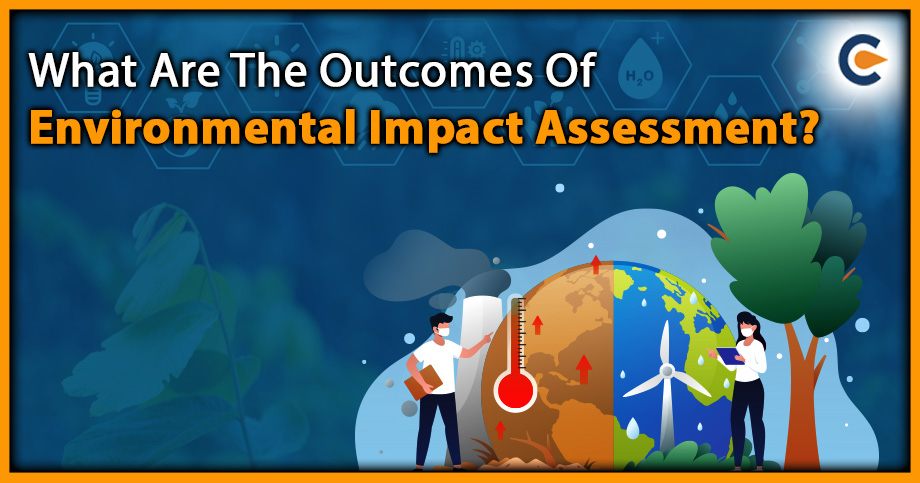The Outcomes of environmental impact assessment help to identify potential environmental impacts of the proposed project or development. This information is used to assess the significance of the impacts and to recommend measures to mitigate or avoid them. The EIA process recommends mitigation measures to reduce or prevent significant adverse environmental effects. These measures include project design or location changes, environmental management plans, and monitoring and reporting requirements. The EIA process provides opportunities for public consultation and participation. This allows stakeholders to provide feedback, express concerns, and suggest measures to mitigate or avoid adverse environmental impacts. The EIA process provides information to decision-makers, allowing them to make informed decisions about whether to approve the proposed project or development. The decision can be to approve the project with recommended mitigation measures, approve the project with additional conditions, or reject the project. The EIA process is often a legal requirement, and the outcomes of the assessment may include obtaining necessary permits, licenses, or approvals required by law.
Outcomes of Environmental Impact Assessment (EIA)
The outcomes of an Environmental Impact Assessment (EIA) can vary depending on the project being assessed and the results of the evaluation. However, some expected outcomes of EIA are:
- Identification of Potential Environmental Impacts: EIA helps to identify potential environmental impacts of a project, such as air and water pollution, soil erosion, deforestation, and biodiversity loss[1].
- Evaluation of The Significance of Impacts: EIA evaluates the significance of the potential environmental impacts of a project, considering the sensitivity of the environment, the magnitude and duration of the impact, and the potential for cumulative impacts.
- Identification of Mitigation Measures: EIA helps to identify measures to mitigate or prevent the potential environmental impacts of a project. Mitigation measures may include project design or operation changes, using best practices and technologies, or adopting alternative approaches.
- Promoting Sustainable Development: EIA promotes sustainable development by ensuring that development projects are designed and implemented to minimise their environmental impact and promote social and economic development.
- Decision-Making: The outcomes of EIA provide decision-makers and stakeholders with relevant information to make informed decisions about the project. The information includes the potential environmental impacts of the project, the significance of the impacts, and the measures to mitigate or prevent the impacts.
- Monitoring and Evaluation: EIA includes monitoring and evaluating the effectiveness of the mitigation measures to ensure that the project’s potential environmental impacts are adequately addressed.
- Improved Project Design: The EIA process may lead to improved project design by identifying potential environmental impacts early in the planning process. This can result in a more environmentally sound project that minimises adverse effects.
How to Conduct an Effective EIA?
To conduct an effective EIA, the following points must be followed:
- Comprehensive Analysis: An effective EIA should comprehensively analyse the proposed project or development and its potential environmental impacts. This analysis should consider all project stages, from construction to operation, and identify any potential adverse impacts on the environment.
- Consultation and Public Participation: An effective EIA should involve consultation and public participation throughout the process. This can involve engaging with stakeholders, including affected communities, to identify concerns and suggestions for mitigating potential impacts. It can also include seeking input from experts in relevant fields, such as environmental scientists or engineers.
- Mitigation Measures: An effective EIA should identify mitigation measures to minimise or avoid potential adverse environmental impacts. These measures should be specific and practical and consider the unique circumstances of the proposed project or development. The EIA should also consider the costs and benefits of the proposed mitigation measures and provide recommendations for their implementation and monitoring.
Conclusion
Outcomes of environmental impact assessment crucial tool for assessing the potential environmental impacts of proposed projects or developments. It helps to identify and evaluate potential environmental impacts, recommend measures to mitigate or avoid significant adverse impacts and promote environmentally sound and sustainable development. The EIA process also provides public participation and consultation opportunities, allowing stakeholders to provide input, express their concerns, and suggest measures to mitigate or avoid adverse environmental impacts. The outcomes of an EIA can lead to improved project design, better decision-making, and legal compliance with environmental regulations. It is important to note that the EIA process is not a one-time event but rather an ongoing process that requires regular monitoring and review to ensure that the recommended mitigation measures effectively reduce or avoid adverse environmental impacts. Overall, EIA is critical in promoting sustainable development while protecting the environment and the communities that depend on it.
Also Read:
Types Of Environmental Impact Assessment











